GSTR-9 filing deadline extended; here is step-by-step guide to help you file form for FY18
GSTR-9 form is referred as annual return, and is needed to be filed by all normal taxpayers including SEZ units and SEZ developers.
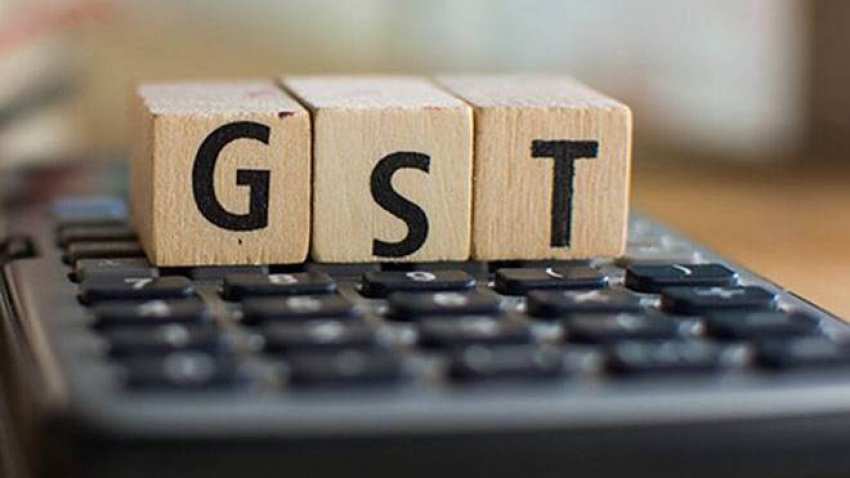
While the deadline for filing of annual return for fiscal FY19, is set on December 2019, the GST council during its 35th meet has extended the due date for filing the same for FY18. Notably, the deadline for filing GSTR-9 for fiscal 2017-18 has been extended on multiple occasions in the past few months. Earlier the deadline was set at June 30,2019. GSTR-9 form is referred as annual return, and is needed to be filed by all normal taxpayers including SEZ units and SEZ developers irrespective of their entity’s turnover. Details like outward supplies, inward supplies, taxes paid, refund claimed, demand raised or input tax credit for filing GSTR-9.
Here’s a step-by-step guide for filing GSTR-9:
Step 1 - Firstly visit the website - www.gst.gov.in. Use your user id and password for login.

(image source: ClearTax)
Step 2 - Once logged in, click on Services option. Under that, there will be a ‘Returns’ option mentioned. Click on ‘Annual Return’.
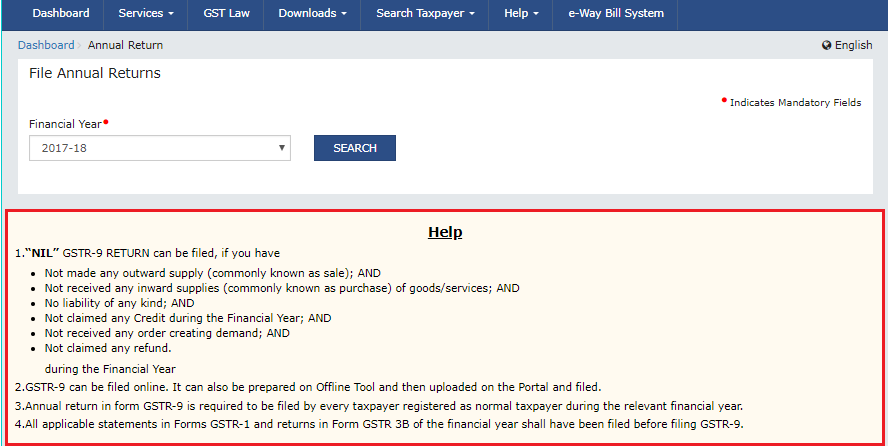
(Image source: ClearTax)
Step 3 - A page titled, File your Annual Return will be opened. Select the financial year of which you want to file annual return. A step-by-step guide will be mentioned for the online/offline filing of GST-9. If you are planning to do it online, then click Prepare Online.
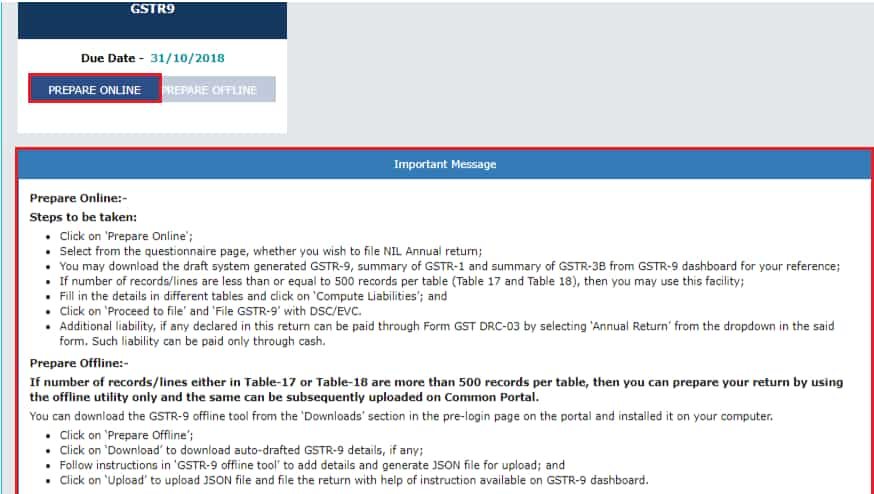
(Image source: ClearTax)
Step 4 - A host of questionnaire will be mentioned for filing GSTR-9. You can select Yes or No for filing NIL return. According to ClearTax, select ‘Yes’ if criterias like no outward supply; there is no receipt of goods and services; no other liability to report; not claimed any credit; no refund claimed; no demand order received and late fees not required to be paid are fulfilled.

(Image source: ClearTax)
The ClearTax note explains that, if you choose ‘Yes’ to file NIL returns, then click on ‘Next’ to Compute Liabilities and file a NIL GSTR-9. If you choose ‘No’ to NIL returns, click on ‘Next’, a page ‘GSTR-9 Annual Return for normal taxpayers’ is displayed. It will contain various tiles for which details must be filled.
Step 5 - You will be directed to a page, where you must enter requisite details in various tables for the financial year.

(Image source: ClearTax)
Step 6 - Once all details like invoices, outward, ITC and others filled accurately, you can preview draft GSTR-9 in excel or PDF format.
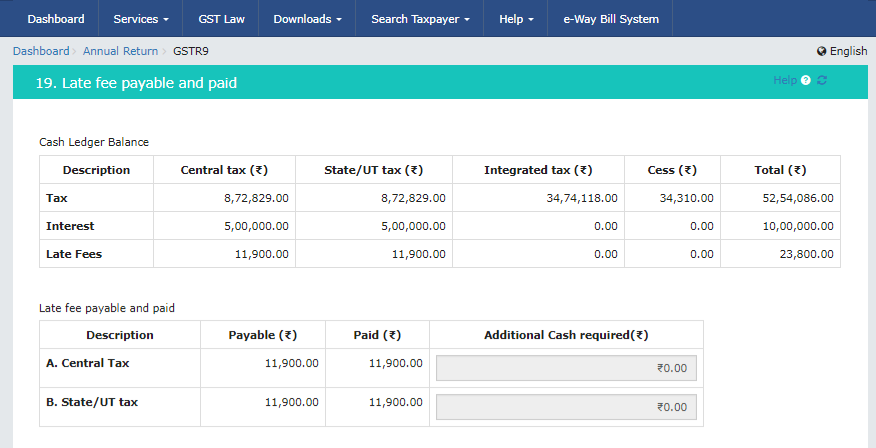
(Image source: ClearTax)
Step 7 - You must compute liabilities. On doing so, the GST portal will process all the details you have provided in various tables. The portal will also display late filing fees information, if you have missed the deadline.
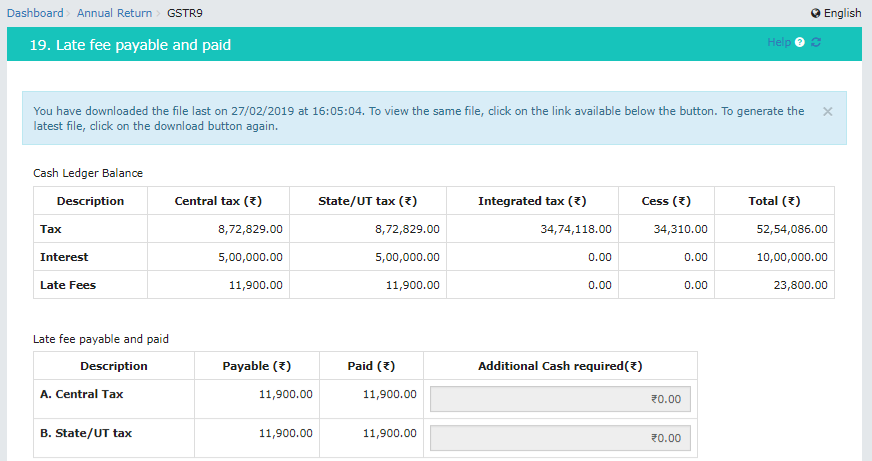
(Image source: ClearTax)

(Image source: ClearTax)
Step 8 - You can finally proceed to file GSTR-9. You can carry the final procedure by, selecting declaration checkbox and opt for ‘Authorised Signatory’. Then click on ‘File GSTR-9’. A new page displaying your GST-9 application with two options will be given. The first option would be file with DSC where taxpayer has to browse and select the certificate, then sign and submit. Second would be file with EVC which if selected will send an OTP on your registered email address and mobile number. You must validate the OTP and submit your application.
Archit Gupta, Founder & CEO ClearTax said last week told Zee Business Online, "Taxpayers must file their GST returns before the deadline passes as this can not only save late fees but also helps avoid penalties and the even more challenging demand notice or the prosecution that may ensue. Further, the annual reconciliation done while filing GSTR-1 at many times reveals possible tax differences between GST returns and books of accounts."
He added, "Thus, any short payment of tax has to be fulfilled along with applicable interest. Huge interest can be saved by timely reconciliation and filing of annual returns."
02:40 PM IST






 GSTR-9 annual return filing deadline nears - Want to file in just 10 minutes? Check this out
GSTR-9 annual return filing deadline nears - Want to file in just 10 minutes? Check this out Tax tips 2019: Filing your very first GSTR-9? Avoid these 8 common mistakes
Tax tips 2019: Filing your very first GSTR-9? Avoid these 8 common mistakes GST Alert! Govt gives breather in filing GSTR-9, GSTR-9C forms, deadline now March 2019; get answers to all your queries here for seamless auditing
GST Alert! Govt gives breather in filing GSTR-9, GSTR-9C forms, deadline now March 2019; get answers to all your queries here for seamless auditing